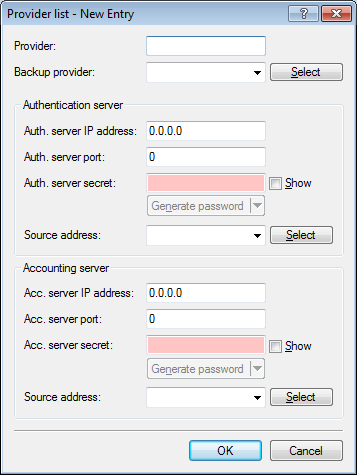Some applications user data is not stored on the device, but on an external, centralized RADIUS server. In this case, the Public Spot must communicate with the external RADIUS server to check the user data.
Note: Please note that specific functions (such as the Public Spot wizards in WEBconfig) are not available to you if you use an external RADIUS server for user administration!
Note: The following instructions assume that you know the IP address of a functional RADIUS server in the network.
The following configuration steps are used to set up a Public Spot that will be used with an external RADIUS server:

